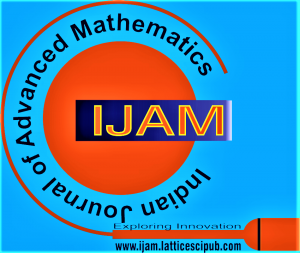![]()
The Triple Product Rule and the Subtleties of the Mathematical Tools Used in Thermodynamics
Felipe Américo Reyes Navarro1, Rafael Edgardo Carlos Reyes2
1Felipe Américo Reyes Navarro, Facultad de Ciencias Físicas, Universidad Nacional Mayor de San Marcos, Calle Germán Amézaga 375, Cercado, Lima, Perú.
2Rafael Edgardo Carlos Reyes, Facultad de Ciencias Físicas, Universidad Nacional Mayor de San Marcos, Calle Germán Amézaga 375, Cercado, Lima, Perú.
Manuscript received on 24 January 2024 | Revised Manuscript received on 06 February 2024 | Manuscript Accepted on 15 April 2024 | Manuscript published on 30 April 2024 | PP: 4-8 | Volume-4 Issue-1, April 2024 | Retrieval Number: 100.1/ijam.A116404010424 | DOI: 10.54105/ijam.A1164.04010424
Open Access | Editorial and Publishing Policies | Cite | Zenodo | OJS | Indexing and Abstracting
© The Authors. Published by Lattice Science Publication (LSP). This is an open-access article under the CC-BY-NC-ND license (http://creativecommons.org/licenses/by-nc-nd/4.0/)
Abstract: We have clarified several formulas from mathematics and physics. Specifically, we have demonstrated that several standard concepts from thermodynamics, which have been recently investigated and rejected in some papers, remain valid. Thus, we have studied the triple product rule, the first law of thermodynamics, Mayer’s relation, work, the function of state, and the relationship between the coefficient of thermal expansion, the coefficient of isothermal compressibility, and the thermal coefficient of pressure. We have utilised multivariable calculus, properties of Jacobians, and other mathematical tools. Likewise, we have provided several didactic examples concerning the interpretation of thermodynamic and mathematical formulas. We have concluded that the basis of several thermodynamic formulas is correct, but it is also complete with subtleties. Thus, those formulas continue to be valid despite some claims in the recent literature.
Keywords: Triple Product Rule, Jacobians, Natural Variables, Work, Function of State.
Scope of the Article: Mathematical Physics
